
John Irvin Gregg was a career U.S. Army officer. He fought in the Mexican–American War and during the American Civil War as a colonel and near the end of the war as a brevet general in the Union army. In 1866, he was nominated and confirmed as a brevet major general of volunteers and a brevet brigadier general in the Regular Army, both to rank from March 13, 1865.
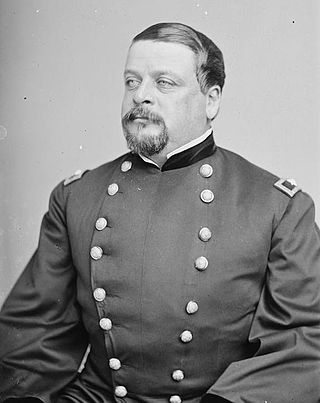
Alfred Gibbs was a career officer in the United States Army who served as an officer during the Mexican-American War and Apache Wars. He served as a brigadier general in the Union Army during the American Civil War.
The 6th Pennsylvania Cavalry was a Union Army cavalry regiment that served in the Army of the Potomac and the Army of the Shenandoah during the American Civil War. It was formed in 1861 as the Philadelphia Light Cavalry and the 70th Regiment of the Pennsylvania Volunteers by Richard H. Rush who also served as colonel from 1861 to 1862. At the request of Major General George B. McClellan, the regiment was equipped with lances which prompted the unit to be known as "Rush's Lancers." The lances proved ineffective in battle and the regiment was issued carbine rifles in 1863. The regiment served in many of the key battles in the Eastern theater of the American Civil War and were mustered out in August 1865.
The 2nd Ohio Cavalry Regiment was a cavalry regiment that served in the Union Army during the American Civil War.
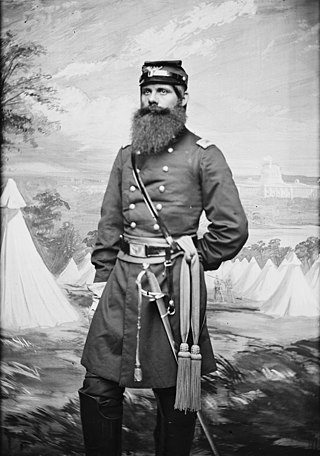
The 5th New Hampshire Infantry Regiment was an infantry regiment that served in the Union Army during the American Civil War. The regiment sustained the greatest total combat losses of any infantry or cavalry regiment in the Union, with 295 killed and 756 wounded.
The 4th Pennsylvania Cavalry Regiment was a cavalry regiment of the Union Army during the American Civil War.
The 1st Connecticut Cavalry Regiment was a cavalry regiment that served in the Union Army during the American Civil War.

The 57th Regiment Pennsylvania Volunteer Infantry was an infantry regiment that served in the Union Army during the American Civil War.

The 1st Massachusetts Volunteer Cavalry Regiment was a cavalry regiment that served in the Union Army during the American Civil War.
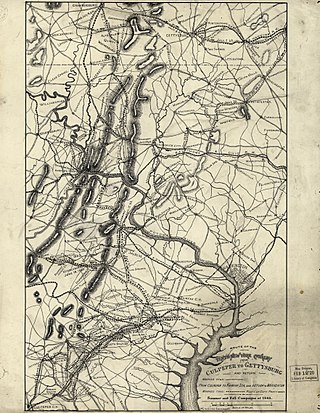
The 10th New York Cavalry Regiment was a cavalry regiment that served in the Union Army during the American Civil War.
The 1st Pennsylvania Cavalry was a cavalry regiment that served in the Union Army as part of the Pennsylvania Reserves infantry division during the American Civil War.

The 8th Pennsylvania Cavalry was a cavalry regiment that served in the Union Army during the American Civil War.
The 13th Pennsylvania Cavalry Regiment was a cavalry regiment that served in the Union Army during the American Civil War.
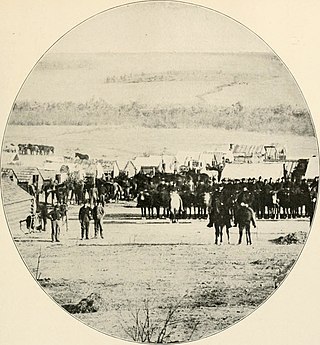
The 5th Pennsylvania Cavalry was a cavalry regiment that served in the Union Army during the American Civil War.
The 11th Pennsylvania Cavalry was a cavalry regiment that served in the Union Army during the American Civil War.
The 5th Pennsylvania Reserve Regiment, also known as the 34th Pennsylvania Volunteer Infantry, was an infantry regiment that served in the Union Army as part of the Pennsylvania Reserves infantry division during the American Civil War.
Battery "C" 4th Regiment of Artillery was a light artillery battery that served in the Union Army during the American Civil War.
The 143rd Pennsylvania Volunteer Infantry was an infantry regiment that served in the Union Army during the American Civil War.
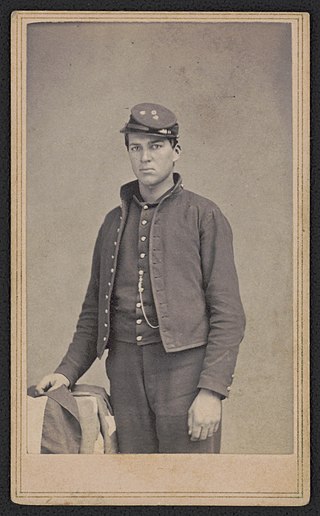
The 2nd New York Cavalry Regiment, officially known as the 2nd Regiment, New York Volunteer Cavalry, was a unit of the Union Army during the American Civil War. It served with the Army of the Potomac and fought in Stoneman's 1863 raid, the Wilson–Kautz Raid, and the Battle of Appomattox Station.
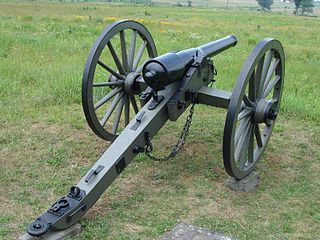
The 4th U.S. Artillery, Battery E was an artillery battery that served in the Union Army during the American Civil War. The unit fought at the battles of Kernstown, Port Republic, Rappahannock Station, Second Bull Run, Chantilly, Antietam, and Fredericksburg in 1862. The battery transferred to the Cavalry Corps where it served for the rest of the war. In 1863, 4th U.S. Artillery, Battery E fought at Chancellorsville, Gettysburg, Culpeper, Bristoe Station, and Mine Run. In 1864, the unit fought at the Wilderness, Todd's Tavern, Yellow Tavern, Totopotomoy, Cold Harbor, the Wilson-Kautz Raid, Opequon, Fisher's Hill, and Cedar Creek. In 1865, it saw action at Dinwiddie Court House, Five Forks, Sailor's Creek, and Appomattox before taking part in the Grand Review of the Armies.











